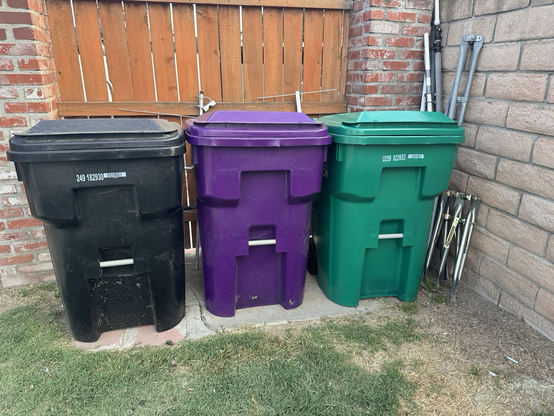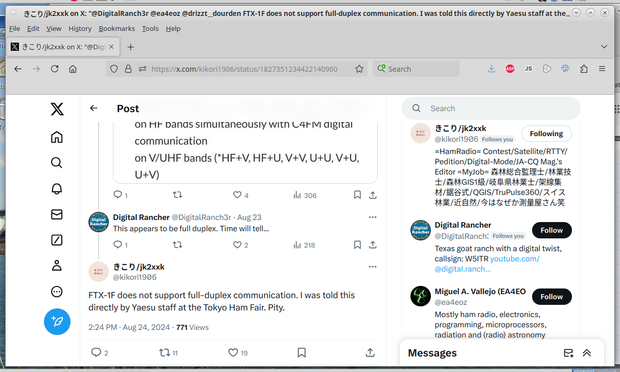@kr1st Now that you have a Dutch call, you only need one more thing - an amplifier, to punch through on those busy European passes. :-)
Enjoying the amateur satellites & HF. All operating is portable, even at home - fun! Owner of an NFL team. Opinions are mine. Will occasionally post en español. Find me on the satellites!
@kr1st Congratulations!!!
WOOT!! I got my Full Dutch amateur radio license.
All it took was a single email. They even honored my request for the PA1ST vanity call. I'm impressed!
It says "CW not included", probably because there was no CW requirement when I took my test in 1987 for my C-class license, which is equivalent to the American Technician's license. All C-class licenses have since been converted to Full license. My wife and I both did fulfill the CW requirement when we got our American licenses, though.
My green earth station arrived today @wd9ewk
@VE2UWY When some US hams keep going on and on about the 1960s Incentive Licensing and even earlier changes, not much is going to change here for a long time...
@VE2UWY I like how the 2 written Canadian exams really don't overlap in content. Not a lot of techie stuff on the Basic exam, not a lot of procedural stuff/regs on the Advanced. Questions I missed on the Basic were more of the regulatory nature (some minor differences between Canadian & US amateur regs).
Canadian Advanced exam was harder than even the old US Advanced exam. I barely passed that in front of a different examiner, during another trip to Vancouver in late 2003.
@VE2UWY I think I did the sending portion first, then the receiving. I know I did both. IIRC I wrote the Basic exam first (I know I missed a few, but comfortably passed), then we went on to the Morse exam.
Afterwards, we filled out the application, which he sent to Industry Canada. In those days, IC would send documents to non-Canadian addresses, and I had my certificate & wallet card here in AZ a couple of weeks later. This part of the process is much better now.
@VE2UWY For my test, once we set up my FT-817 with his straight key, I sent text he had on a sheet of paper. After sending for 3 minutes, he told me I had no errors. It was hard for me to send slowly, but not too slow. Then he took the straight key, and I copied what he sent. After 3 minutes, he looked at what I copied, and told me I passed.
Seems like you could use recorded Morse for the receiving portion, but you probably need the setup for the sending portion.
@VE2UWY @HopelessDemigod Yup, the Morse qualification requires sending and receiving at 5wpm for 3 minutes. See RIC-3 section 5.2 at:
I remember my Morse test in 2002, at an examiner's house in North Vancouver. Examiner didn't have an oscillator, but had a straight key. I brought an FT-817 on this trip. Using the sidetone from the 817, but not transmitting, I was able to complete this qualification along with the Basic qualification that afternoon.
@ajh OK. I worked them on HF a few times in past Field Days. Might be able to hook up on that satellite for the QSO & bonus. I'll probably do my own thing for Field Day, satellites and (hopefully) HF, maybe from northern Arizona.
@ajh Working satellites for a club?
@kr1st Looks like videos are from each forum room, on each day. Makes for l-o-n-g videos, but at least they are available. Good luck!
@kr1st @ARISS_Intl Videos show the slideshow, don't know if any of them show presenters. But it is a way to see/hear the forums, especially if you weren't there in person.
@kr1st @ARISS_Intl DARA has recordings of the Hamvention forums on YouTube. The ARISS forum is available at:
https://www.youtube.com/watch?v=aQuC0uAH-vw&t=13140s
(starts just after the 3:39:00 mark in this video of almost 8 hours, with the AMSAT forum following the ARISS forum)
Hey All, @smitty is doing a POTA activation right now! Currently on 7.275 MHz at 16:34 UTC. Chase him down!
@oe1omk RX wasn't usually deaf on older 2m/70cm handhelds that could handle full-duplex operation, even with weaker downlinks like SO-50 (250mW around 436.795 MHz). This functionality had been available in the 1990s with HTs from the big 3 manufacturers, & Alinco too. Standard even had some HTs that handled full-duplex operation.
I still like my FT-817/TH-D75 (or IC-R30, or TH-D74) combo for all-mode full-duplex satellite ops. Very portable. With diplexer, works great w/my Elk log periodic.
@oe1omk I agree with you about the lack of full-duplex functionality in the FTX-1. Shouldn't have been expected, since it has been known for months it wouldn't have it, from statements made by Yaesu at last year's Tokyo Ham Fair.
@oe1omk Full-duplex functionality is also available on some VHF/UHF mobile radios currently on the market. In the past, even in handheld radios (some Chinese brands have that now, but working only when TX in 70cm & RX in 2m). Unfortunately, the last handheld 2m/70cm radio from the big amateur equipment manufacturers with full-duplex functionality was Kenwood's TH-D72.


